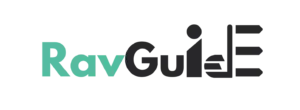As work environments evolve and remote work becomes increasingly prevalent, the design and functionality of office spaces are more crucial than ever. A thoughtfully designed office can significantly boost productivity, inspire creativity, and enhance overall well-being. Here are some valuable tips for reimagining your office space to align with the demands of modern life.
1. Embrace Flexibility in Design
The traditional notion of a fixed desk and chair setup is outdated. Opt for versatile furniture solutions, such as height-adjustable desks, mobile workstations, and adaptable seating options. This flexibility allows you to modify your space to suit various tasks, whether you’re collaborating with a team or concentrating on individual projects. Additionally, consider creating multifunctional areas that can serve as meeting spots, brainstorming hubs, or quiet zones for focused work. Consider using stylish interior office doors to create a sense of separation between collaborative spaces and individual work areas, helping to maintain focus and privacy.
2. Invest in Ergonomic Solutions
Comfort is essential for an efficient workspace. Prioritize ergonomic furniture that supports your body during long periods of work. This includes investing in adjustable chairs and sit-stand desks and ensuring proper keyboard and monitor positioning. Good ergonomic practices enhance comfort, boost productivity, and reduce the likelihood of injuries. Consulting with a specialist can help you tailor your workspace to your specific ergonomic needs.
3. Harness Natural Light
Natural light is a powerful ally in creating an uplifting work environment. Whenever possible, arrange your workspace to take advantage of windows or use light-colored décor to reflect daylight. If your office space lacks adequate natural light, consider installing daylight-mimicking bulbs to brighten the atmosphere. Incorporating plants can also improve air quality and create a more inviting, nature-connected environment.
4. Integrate Technology Thoughtfully
Modern technology is integral to office design. Equip your workspace with up-to-date technology that supports productivity, such as high-speed internet, effective software tools, and reliable communication systems. However, it’s essential to set boundaries to ensure technology enhances rather than distracts from your work. Designate specific areas for work and relaxation to maintain a healthy balance.
5. Personalize Your Workspace
Adding personal touches can transform your office into a more inviting and motivating space. Include items that reflect your personality and interests—be it artwork, photographs, or meaningful memorabilia. A personalized workspace can stimulate creativity and make working more enjoyable, but be careful not to overcrowd the area; keeping it organized is key to sustaining focus.
6. Foster Collaborative Areas
Collaboration is vital in today’s work culture, whether among colleagues or clients. Create designated spaces within your office for teamwork, brainstorming sessions, and casual meetings. Comfortable seating, whiteboards, and technology for virtual meetings can facilitate these interactions. Encouraging collaboration not only fosters innovation but also strengthens team cohesion.
7. Prioritize Well-Being
Integrating features that promote well-being can significantly enhance your office atmosphere, and one of the best places to start is with your office lobby design ideas. Incorporating well-being-focused designs into your office lobby not only boosts productivity but also contributes to a more engaging and supportive work culture. Also, Consider adding elements such as a meditation space, a small fitness area, or zones for relaxation. Practices like mindfulness and physical activity can help alleviate stress and stimulate creativity, making them valuable additions to your work environment.
Conclusion
Reimagining your office space to fit modern life involves a careful blend of flexibility, ergonomic considerations, natural light, technology integration, personalization, collaboration, and a focus on well-being. By applying these strategies, you can create a workspace that not only enhances productivity but also improves your overall quality of life. Embrace the transformation of your office into a dynamic environment that caters to the needs of today’s workforce.

